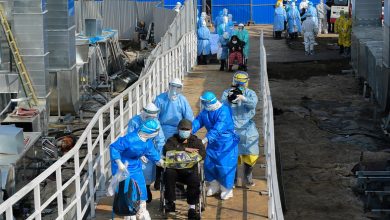
Lassa Fever: Nigeria’s death toll hits 188
The Nigeria Centre for Disease Control has disclosed that Lassa fever has claimed 188 lives since the beginning of the year, and this is coming as the ravaging coronavirus on its part continued to wreck havoc across the world.
Penpushing reports that with this reports, Nigeria is now battling two deadly diseases, with coronavirus already infected 276 people and caused six deaths according to statistics available as at the time of this report on Thursday
The Nigeria Centre for Disease Control (NCDC), explained that since the onset of the 2020 Lassa fever outbreak, the country has recorded 963 confirmed cases and 188 deaths, while in the recent time new cases were reported from Edo, Ondo, Ebonyi, Bauchi and Sokoto..
Penpushing further reports that, annually records showed that , health workers are also affected by the disease, sometimes leading to fatalities, while in the last few years, the number of suspected and confirmed cases, as well as deaths from the disease, have been rising, leading to concerns from health experts.

The records also showed that no new healthcare worker was affected in the reporting week 14,but so far, the total number affected health workers during the outbreak is now 37,and the weekly situation reported showed that three states, Edo, Ondo and Ebonyi, have the highest number of cases from the outbreak. .
Penpushing also reports that, Lassa Fever is a hemorrhagic disease transmitted by a vector called multimammate rat, and the virus is transmitted from the excreta or urine of the vector to humans, and from humans to humans.
The symptoms of the disease at early stages are similar to febrile illness such as malaria, while the general symptoms include fever, headache, sore throat, general body weakness, cough, nausea, vomiting, diarrhoea, muscle pains, chest pain, and in severe cases, unexplainable bleeding from ears, eyes, nose, mouth, vagina, anus and other body orifices. It could also present persistent bleeding from sites of intravenous cannulation.







